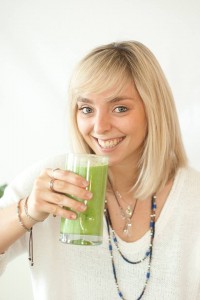In relation to the concepts of sustainability, green earth, preserving our resources and caring about our earth, here is ONE simple thing you can do that will cut your food budget as well as limit your level of food waste. Make your own broth!
Just think about it, when you buy broth, you are buying something pre-packaged that has been sitting in a box for an unknown length of time, with ingredients that you may not know of and can’t verify. It also generates waste. Making your own broth is an easy, cost-effective, timeless thing that you can do to help reduce your carbon footprint, and make your life more enjoyable. Understanding what your food is and how to use all of its parts is another way to tie you to the earth and increase your level of compassion for the earth, and for yourself. And it always tastes exponentially better, when you make it at home!
There are lots of different ways to make broths. If you eat meat and love to make soups, stews and curries, bone broths are a great way to start the dish. This is simply done by cooking the bones from the cuts of meat you buy (try to focus on buying organic, grass fed, local meat) in water for several hours, in order to obtain all those wonderful minerals and vitamins that are in bones. Bone broth soups are probably one of the best things you can have when you are feeling under the weather or when the weather changes and your immunity needs a good booster!
I argue that as long as you are conscious of the amount you eat, you know your vendor and focus on buying good quality meat over quantity- then there are many benefits to eating meat. Also, there is an abundance of nutritional density from bones that you simply cannot get from vegetables. Some of the key beneficial nutrients are calcium, phosphorus, magnesium & glucosamine.
Another type of stock you can make is a seafood stock, with all the shells and scraps of seafood such as lobster & crab shells, prawn shell and fish bones. This is a great way to get the minerals and the flavor into a wonderful broth base.
Really, with any meat broths the focus is to use any bones or carcass. With bone broths- you want to cook it for quite a while, I recommend around 12-24 hours, so that you can get as much goodness out of the bones as possible. A key with making bone broths is to add vinegar, which will help in leaching out all of these minerals from the bones. Another great thing you can do is add dulse or kelp to the broths. This will increase the nutritional profile as well as increase the taste!
That said, I love making vegetable broths and they really are the easiest things to make. All you need to do is keep any scraps from your vegetables- and cook them in water before they totally wilt and go bad. Some of the best things to save for your vegetable broths are: beet greens, celery leaves/tops/scraps, carrot greens, wilting greens that you don’t want to eat, and the stalks of hearty greens (chard, kale, collards). You can even take the peels of some vegetables (if you have peeled your vegetables before cooking, which I recommend you don’t do because there is SO much of the nutritional value in the peel) and add them into the stock. You can use any and all vegetable trimmings and scraps to make your soup broth, it’s as simple as that. If you start your cooking off with something like this, that you have prepared and know exactly how it was made and what is in it, you are setting yourself up for success! Not only are you showing your body that you love it, but you are also indirectly showing compassion to the world.
Originally posted at Chloe’s Countertop – where you’ll also find Chloe’s vegetable broth recipe.












